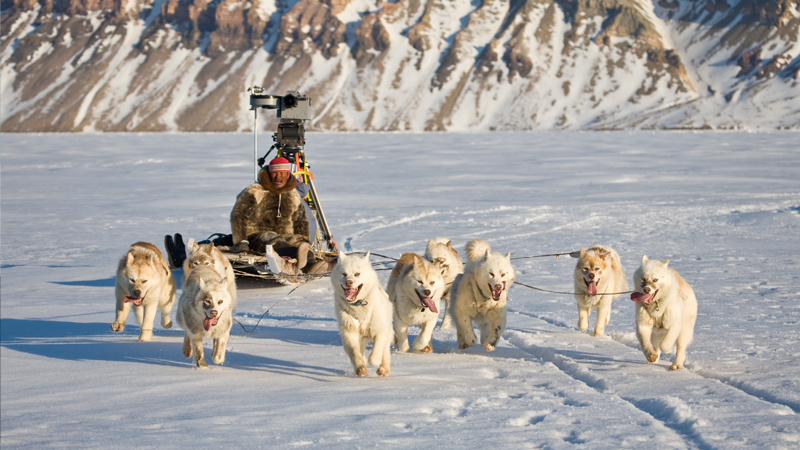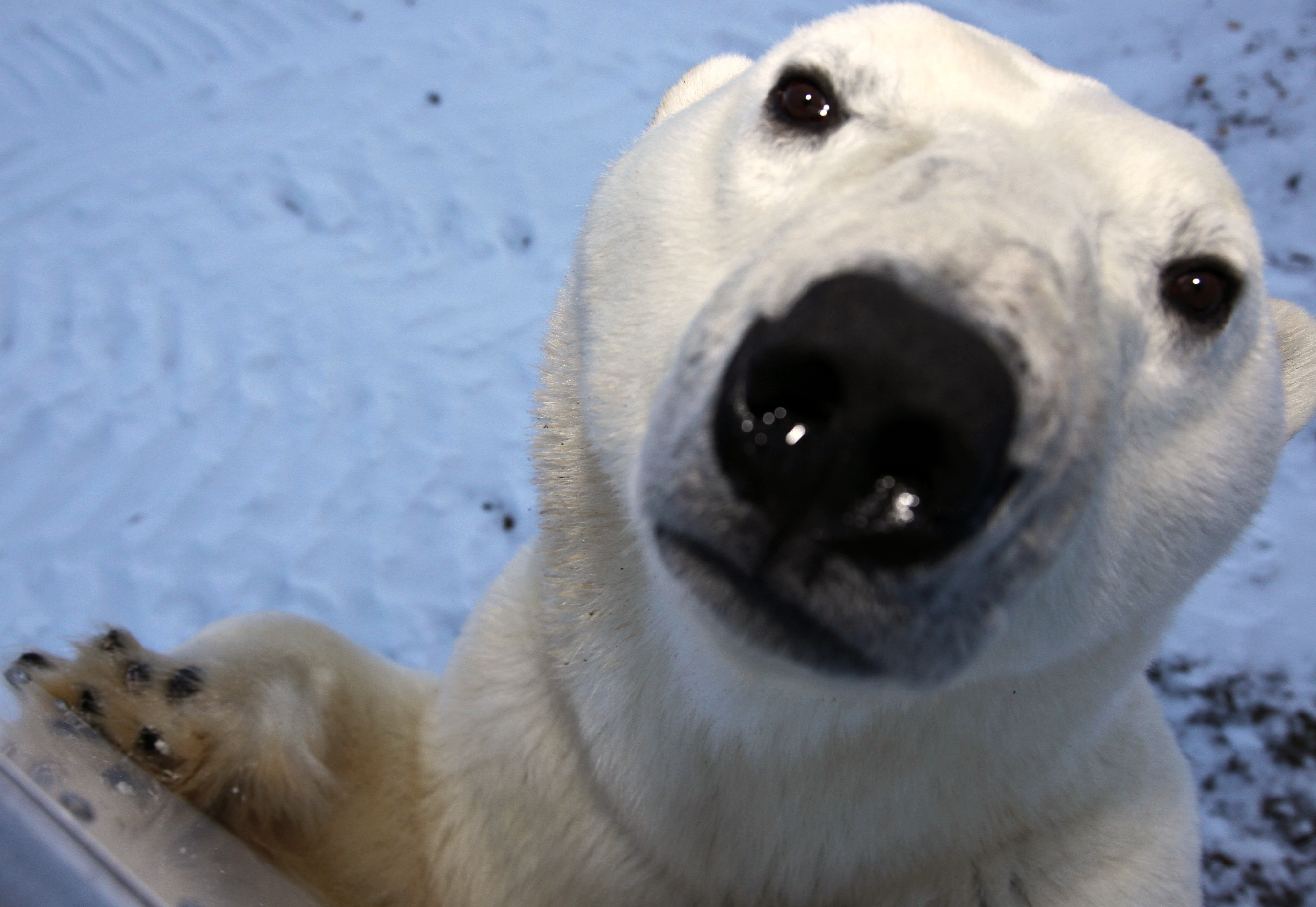One World One Ocean
MacGillivray Freeman crews got wonderful footage by mounting IMAX cameras to the back of Inuit sleds.

MacGillivray Freeman crews got wonderful footage by mounting IMAX cameras to the back of Inuit sleds. The sleds are pulled by Qimmiq, Inuit dogs that have arctic adaptations traceable to 4,000 years ago.
Our film crew got to see first-hand what life is like in the far north while they were filming To the Arctic. We had a chance to ask members of our crew – Director of Photography Brad Ohlund, Camera Assistant Rob Walker, Director Greg MacGillivray, and Screenwriter Steve Judson – about what they saw during the film expedition. Here are some of their observations from the Arctic.
MFF: Are the Inuit worried their main mode of transportation may not be available as the sea ice continues to disappear?
Brad: Not only are these Komotics an important form of transportation, the dog teams play an important cultural role. The Inuit are very concerned their way of life is being threatened.
Greg/Steve: Yes, for the same reason that threatens the polar bear. If the sea ice melts each summer, as scientists predict it will by 2050, bears and native people will need to transport themselves over water – a slower way to travel.
Q2: How fast can these dog sleds travel?
Rob: This will depend on how icy or slushy the ice is at that time. It also depends on the weight of the “Komotic” or sled.
Greg/Steve: About 10 mph.
Sources:
http://www.sleddogcentral.com/inuit.htm
http://www.polarbearsinternational.org/polar-bears/bear-essentials-polar-style/characteristics/paws-claws-ears-and-tails




